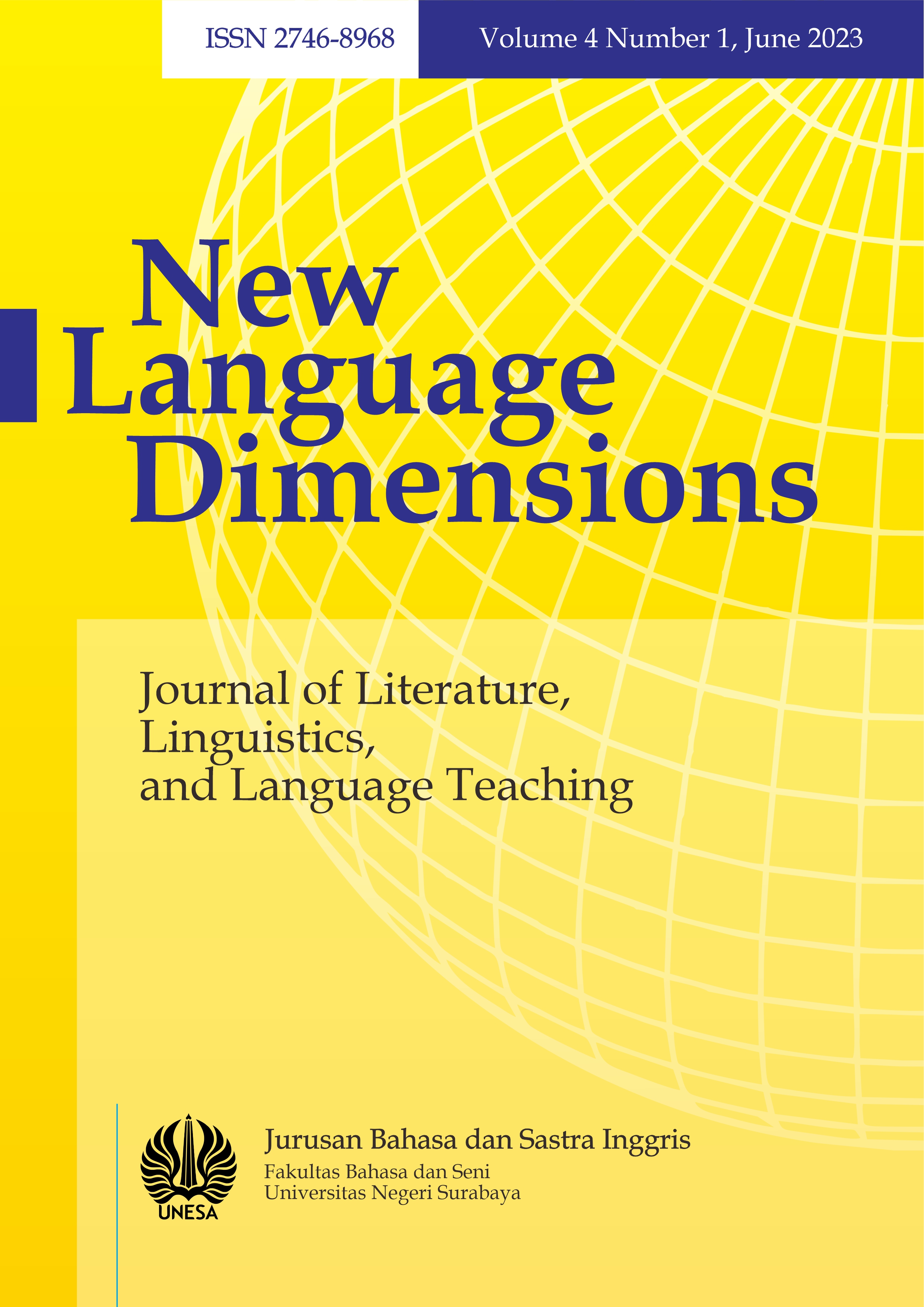A Multimodal Discourse Analysis of Wonda Coffee TV Commercial
DOI:
https://doi.org/10.26740/nld.v4n1.p78-90Keywords:
Multimodal Discourse Analysis, Ideational Metafunction, Representational Metafunction, CompositionalAbstract
This research involves a Multimodal Discourse Analysis of a commercial video from a famous coffee brand from Malaysia in 2022. This research uses qualitative method and revolves around Halliday’s ideational meta-function and Kress & Van Leeuwen’s representational meaning theory in order to analyze the object of this research. This research is limited only to analyzing the linguistic and visual aspect of the selected commercial to interpret their meanings with multimodal study. The ideational analysis of the selected commercial entitled “Wonderful Colors of Wonda” found that mental process was mostly employed in the video’s utterance. According to ideational meta-function analysis, the commercial video intends to deliver a message about how people unfairly perceive others who are different from them and a possibility of a better society in the future where people would not discriminate others. Within the representational analysis, through conceptual and narrative meaning analysis, the researcher found that the commercial video contains not only a selling-point of a product, but also an implied meaning about social diversity that often happens within our society and who are involved in it. This research is a significant contribution in multimodal discourse analysis on advertisement, as it can prove how important linguistic aspects are when it comes to delivering message through something with multimodality such as commercial video.
Downloads
References
Asaolu, & Raphael, O. (2022). Multimodal Discourse Analysis of Selected Advertisements in Nigerian Newspapers. A Journal of English Studies.
Creswell, J. W., & Poth, C. N. (2018). Qualitative Inquiry & Research Design: Choosing Among Five Approaches . SAGE.
Eiseman, L. (2017). The Complete Color Harmony. Beverly: Rockport.
Gerot, L., & Wignell, P. (1995). Making Sense of Functional Grammar. Australia: Gerd Stabler.
Guo, F., & Feng, X. (2017). Multimodal Discourse Analysis of Advertisements-Based on Visual Grammar. Journal of Arts & Humanities. https://doi.org/10.18533/journal.v6i3.1132
Halliday, M. A., & Matthiessen, C. M. (2004). An Introduction to Functional Grammar. New York: Oxford University Press.
Hidayat. (2014). The Ideational Meaning Relised In The Written Discourse In Online Newspaper On Abdul Qodir Jaelani. English Education Journal.
Kress, G., & Leeuwen, T. V. (2006). Reading Image: The Grammar of Visual Design. Abingdon: Routledge.
Kress, G., & Leeuwen, T. V. (2020). Reading Images: The Grammar of Visual Design. London: Routledge.
Paltridge, B. (2012). Discourse Analysis. New York: Bloomsbury Academic.
Thorson, E., & Rodgers, S. (2012). Advertising Theory. Taylor & Francis.
Downloads
Published
Issue
Section
 Abstract views: 567
,
Abstract views: 567
, PDF Downloads: 388
PDF Downloads: 388











